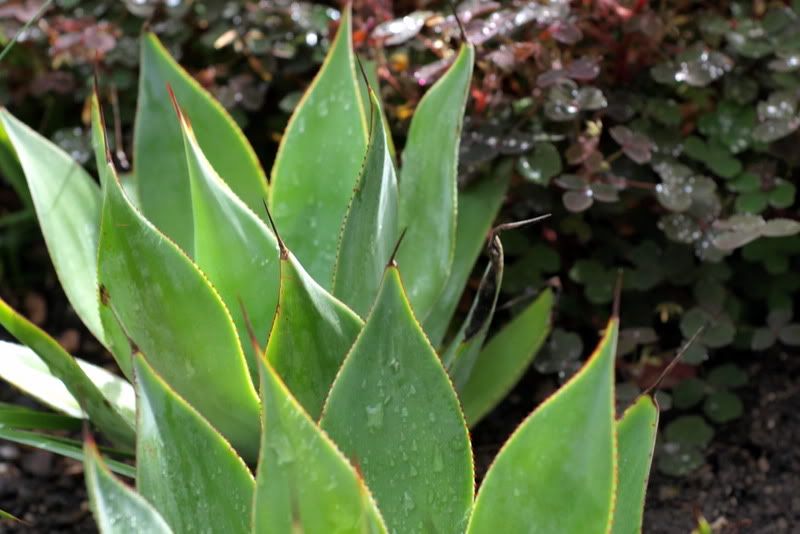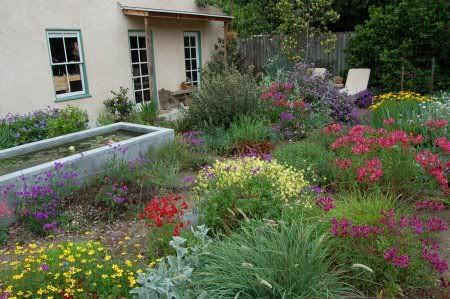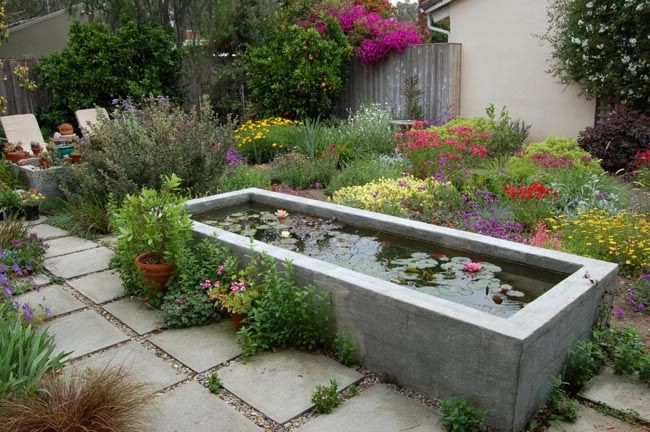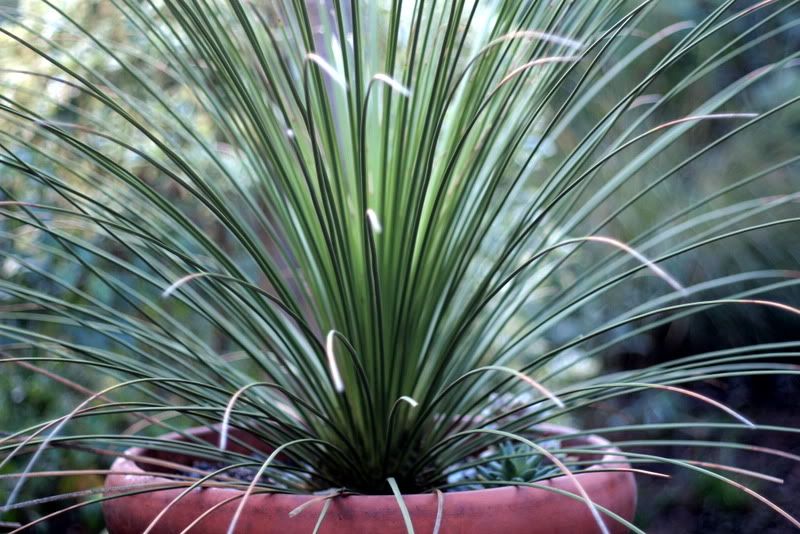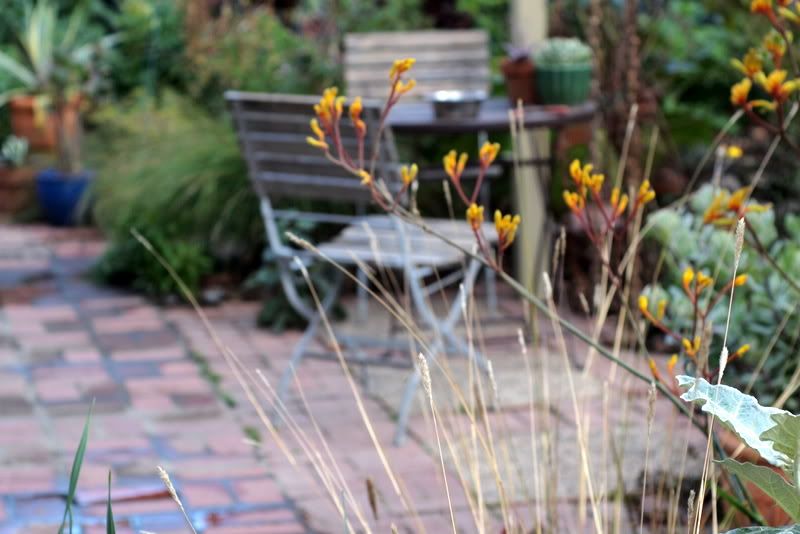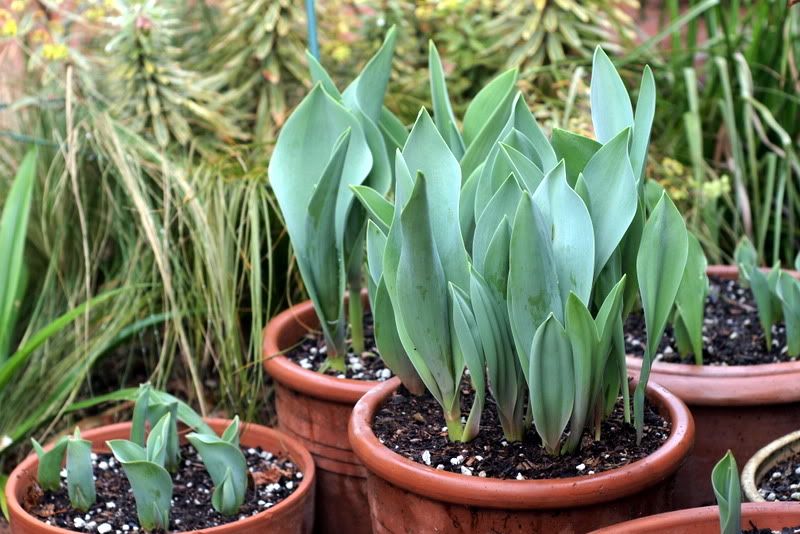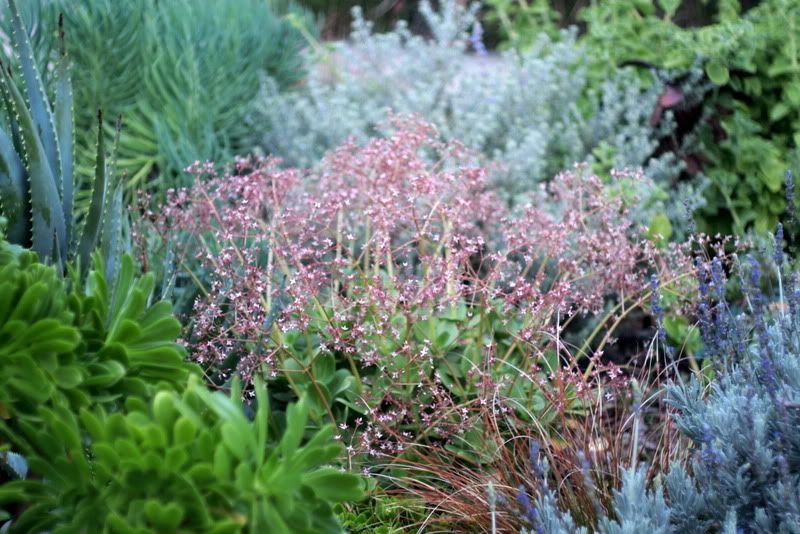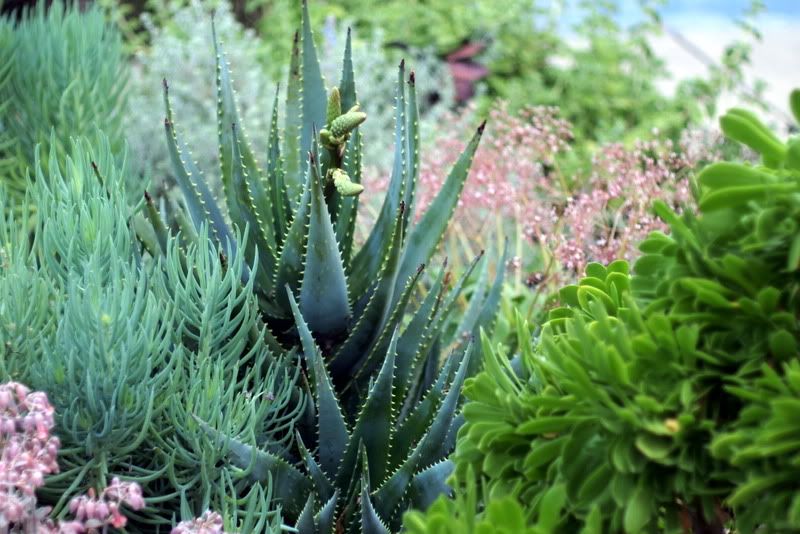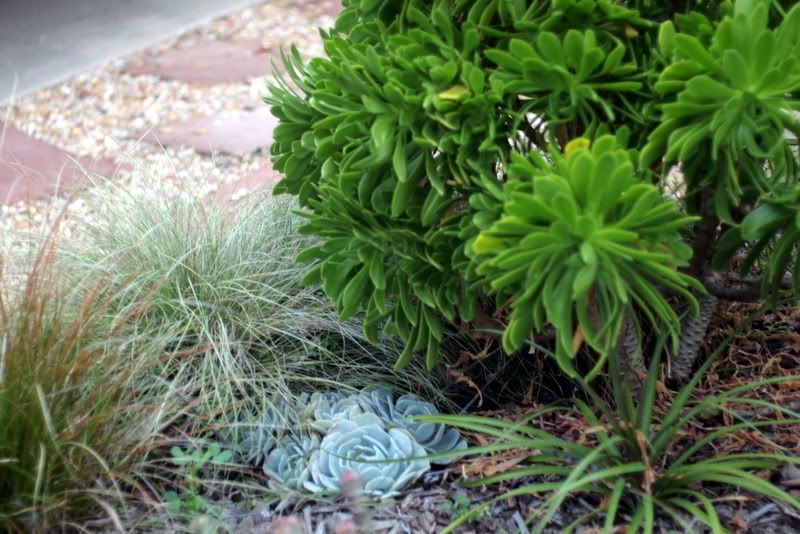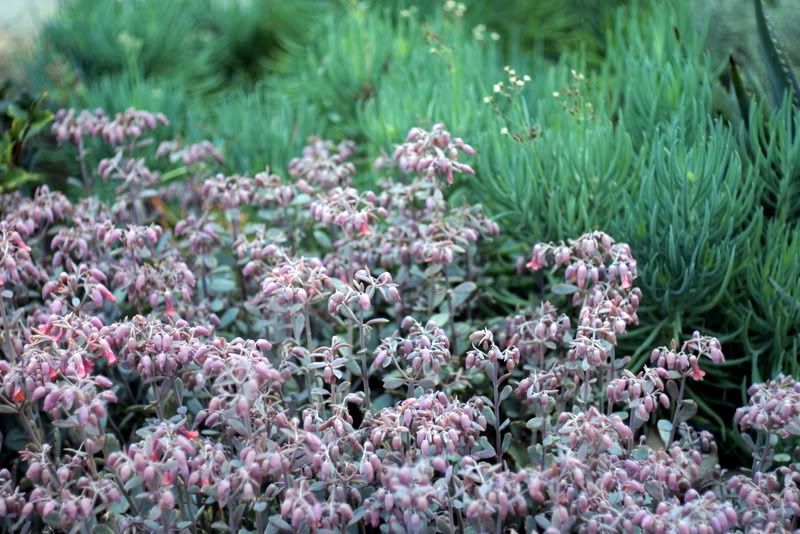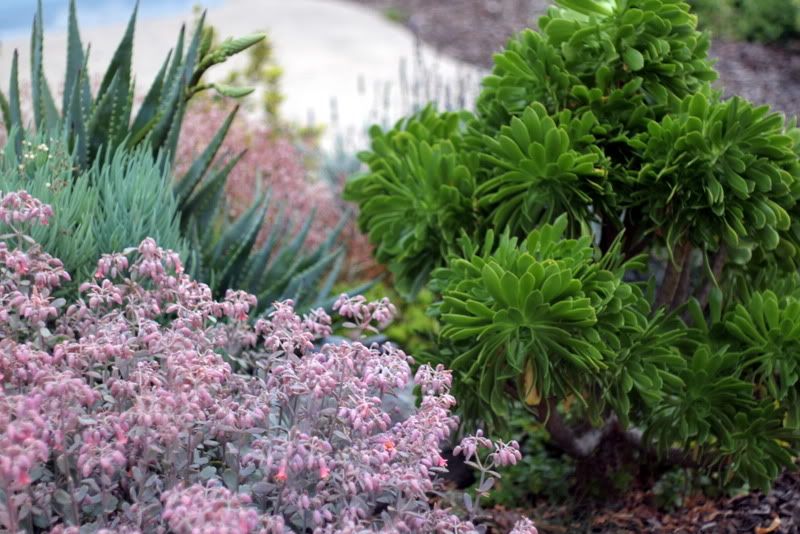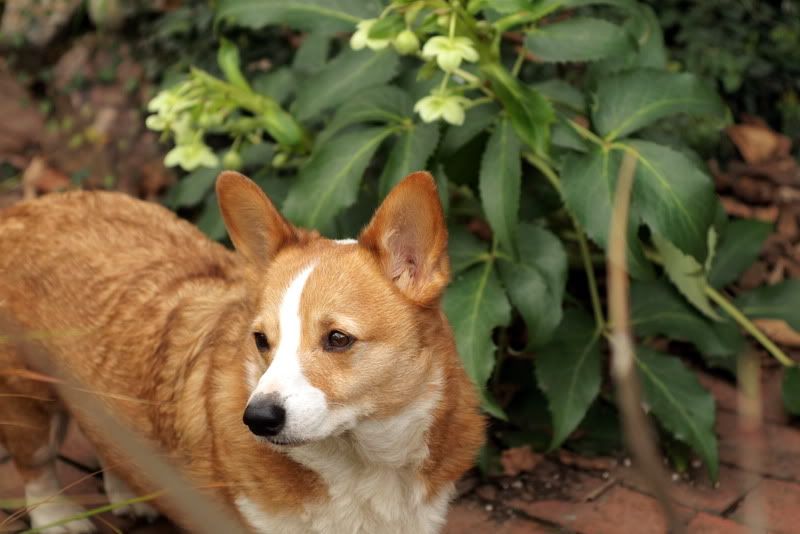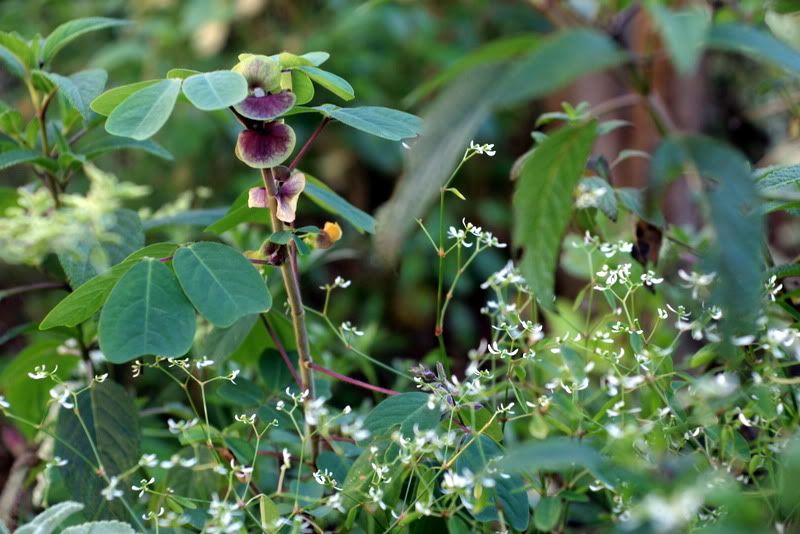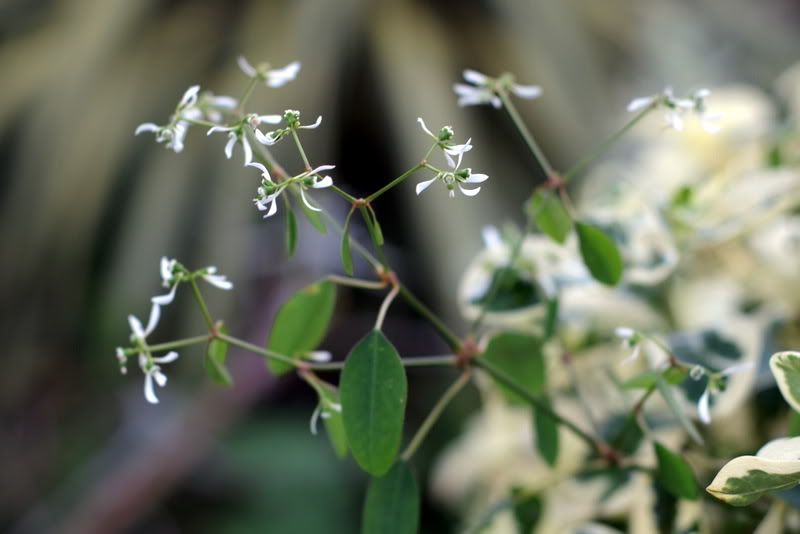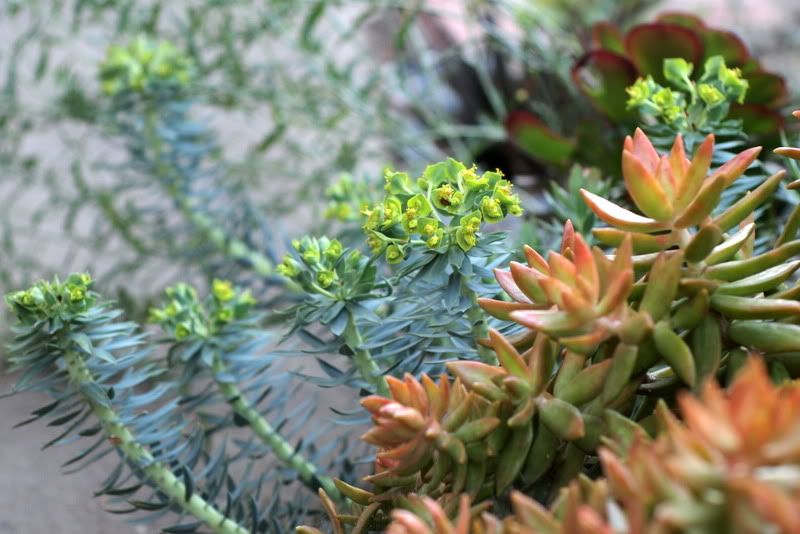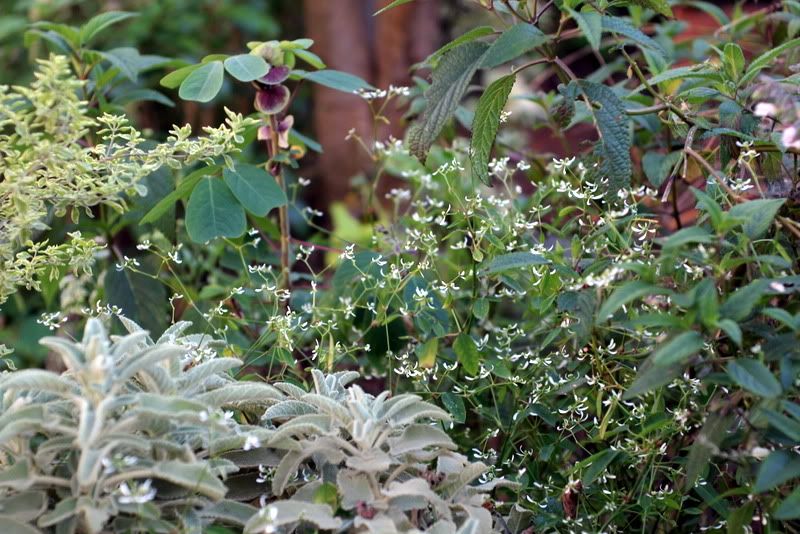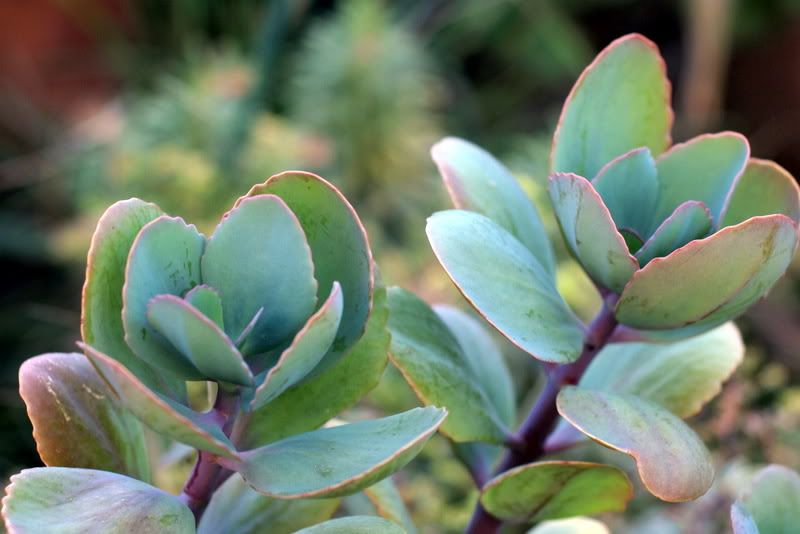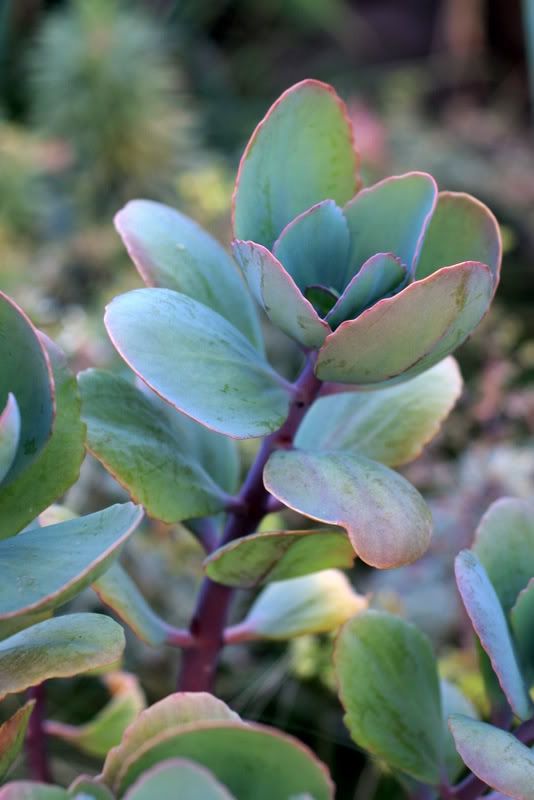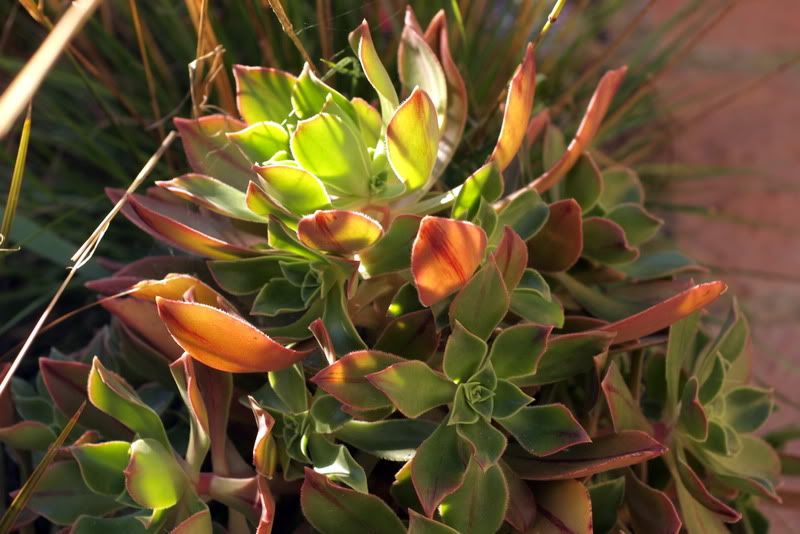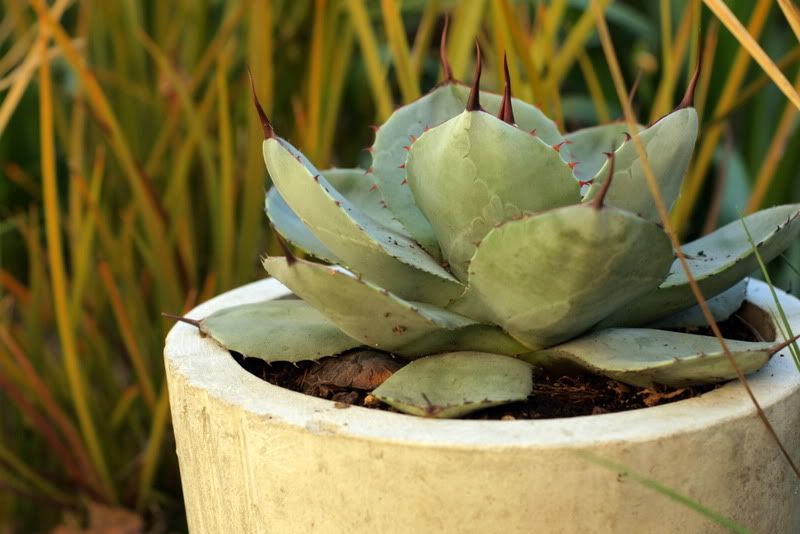I’ve been in a digging mood, which probably dates back to this draft of a post I wrote but never posted on December 28, 2010. A brief shower last Sunday has been the only rain since the December storms, and I can’t help wondering if we’ve now entered the drought the experts said was in store for us this winter before that Pineapple Express upended their predictions and roared into town. My 30-gallon rain barrel from that storm is already empty.
From the AGO archives, December 28, 2010:
“As I wrote a couple days ago, the recent rains have set Oxalis vulcanicola on the move again.

Oxalis advancing towards Lobelia tupa, pictured below. If you squint really hard, you might possibly be able to make out a naked stem of the lobelia.
I’ve been squinting a lot at this lobelia. Muttering some harsh words at it too. I must’ve left the pottery shard to mark its spot so I wouldn’t plant over it.

It’s the lobelia that has been the problem child, not the oxalis. In fact, a couple mornings ago, the lobelia was destined for removal to a pot. Bought at a mature size in a gallon container, it’s occupied this sunny spot for at least a year, to the general misfortune of the garden overall. It requires a large amount of space, but refuses to take ownership of that space. Not much basal growth, just disheveled, naked stems snaking out a couple feet with a miserable poof of leaves at the end of the stems. This fall new acquisitions were planted closer and closer to the lobelia, which isn’t helping matters, but overcrowding can sometimes reflect, as in this case, a lack of respect for a plant that fails to thrive.
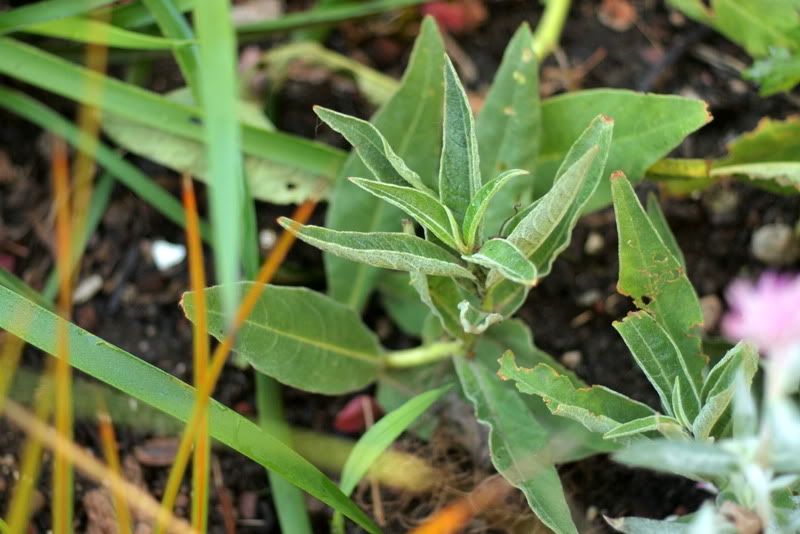
Researching the lobelia on the computer, I found this wonderful entry on Lobelia tupa from The Patient Gardener’s Weblog. If there’s any chance at all my lobelia might grow to resemble that beauty, I’m leaving it alone, tracing a bright Maginot line of pottery shards in the soil over which no oxalis shall be allowed to advance or new acquisitions be planted.
More encouragement comes from photos of the Lobelia tupa grown at Mesogeo Gardens, Bainbridge Island, Washington. I’m guessing the Patient Gardener and Mesogeo’s Gardens are in a much cooler, moister zone 8, and maybe the spot I’ve given this Chilean lobelia is in too much sun.

I’m granting the lobelia a one-year grace period, at which point it gets moved to a pot, where I can wheel the invalid around to wherever suits it best. Maybe somewhere deep in the garden if it persists in this ugly phase. (Making threats is a time-honored gardening technique. There is a theory among avid rose growers that simply placing a shovel near an under-performing plant will produce astonishing vigor in a weak grower essentially threatened with the dreaded “shovel pruning.”)
Later that day…
Despite that upbeat and sensible plan, as often happens when I get a shovel in my hand, the day took a different turn. I should have paid closer attention to all those military metaphors, drawing Maginot lines and such. Clearly, a destructive mood was taking hold, one I get nearly every winter when exasperation with my tendency to overplant overwhelms common sense. No sooner had I typed the last line was a shovel grabbed and the afternoon spent removing a considerable amount of biomass so the lobelia could be transplanted to a shadier spot. One removal led to another, until the final tally of victims from overplanting included: (a) a 4X4 foot Teucrium fruticans azureum, (b) 3X3 foot Ballota acetabulosa, leaving a small rooted remnant; (c) a 6-foot tall leptospermum standard; (d) a 5X3 foot mass of Cobaea scandens, piling in on itself tendril upon tendril to become a free-standing, viney column, leafy on the surface, slimy underneath.
And rather than waiting a year, as I prudently wrote earlier in the day, the Lobelia tupa was dug and moved to the newly opened, slightly shadier location. A couple clumps of languishing ruby grass/melinus were moved here as well. (The soil was still surprisingly light after all that rain, for we all know that one NEVER digs in excessively wet soil. The day of solid rain following the transplanting makes digging ill advised for at least a couple weeks.)
What started out as a few snips of oxalis turned into a full-blown demolition session, which always seems to follow the busy fizz of the holidays. I can try to talk myself out of this impulse, but when my hand touches a shovel mid-winter, anything goes. What sounds chaotic and irrational is just a continuation of the 22-year conversation I’ve had with this garden — overplanting then the inevitable thinning out, craving the excitement of new plants but not having the necessary space in which they can mature, the garden equivalent of yo-yo dieting. After the thinning, hellebores grown against the back wall, previously concealed by the cobaea in front, joined the garden again, along with a newly revealed phlomis and some salvias hidden behind the standard leptospermum. The garden once again looks lean and sleek with about as much winter bareness as I can tolerate.”
Today, February 2, 2011. In its new location in deeper, richer soil, the Lobelia tupa currently is budding leaf growth along its stems but otherwise looks as inert as ever. Below is a summer 2010 photo of the Teucrium fruticans azureum that was removed in late December. So pale and ghostly beautiful but grows like a tumbleweed. (Some of the purplish bloom belongs to a solanum, which was disentangled from the teucrium and pruned into a standard. Not sure if I like this formality or not, but if the ruby grass and euphorbias I’ve also moved here thrive under the solanum’s canopy, I just might leave it alone.)
The golden blur in the distance, a duranta over 8 feet tall, has also been removed this winter.
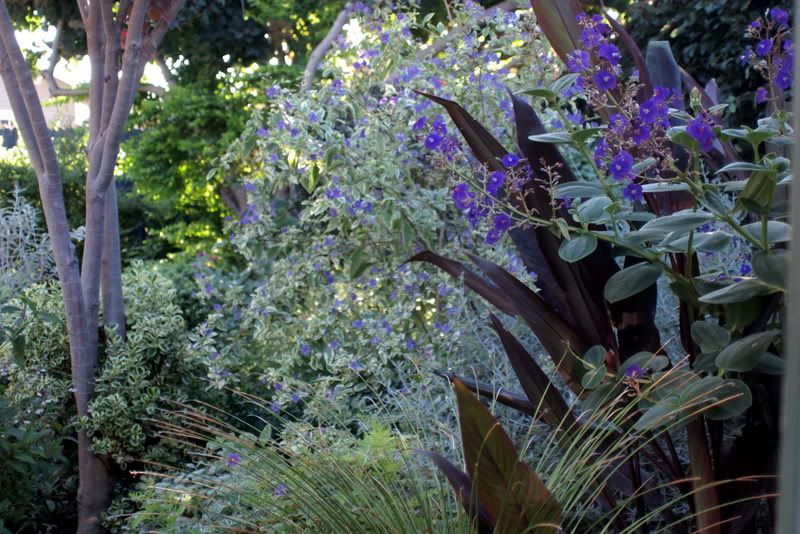
The canna and tibouchina were untouched and will be back in summer 2011.

So to those who might be inclined to believe all is luxuriant ease in a zone 10 garden, let mine be the cautionary tale. When a garden is workable nearly 12 months out of the year, there is scope for some serious mischief and yo-yo gardening. It says a lot about my patience as a gardener that, rather than worrying over the nonperforrmance of the lobelia for another year, I plopped a couple of the Agave attenuata and shawii hybrid ˜Blue Flame™ in its spot. Nothing to worry about there.
